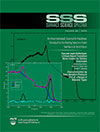
Surface Science Spectra
Scope & Guideline
Connecting Scholars to Surface Science Breakthroughs
Introduction
Aims and Scopes
- Spectroscopic Techniques:
The journal primarily publishes research utilizing techniques such as X-ray Photoelectron Spectroscopy (XPS), Hard X-ray Photoelectron Spectroscopy (HAXPES), and Time-of-Flight Secondary Ion Mass Spectrometry (ToF-SIMS) to investigate surface compositions and chemical states. - Material Analysis:
Research articles frequently cover a broad spectrum of materials, including metals, oxides, nanomaterials, and complex organic compounds, showcasing the versatility of spectroscopic methods in material science. - Optical Properties:
The investigation of optical properties through methods like spectroscopic ellipsometry is a core focus, providing insights into the electronic structure and optical behavior of various thin films and nanostructures. - Historical and Cultural Materials:
The journal also emphasizes studies on historical materials, especially pigments and their degradation, which are analyzed using advanced spectroscopic techniques to understand their composition and preservation. - Reference Spectra Compilation:
A unique contribution is the systematic compilation of reference spectra for various materials, facilitating better interpretation and comparison in future studies.
Trending and Emerging
- Advanced Spectroscopy Techniques:
There is a marked increase in the application of advanced spectroscopic techniques, particularly HAXPES, which is gaining traction for its ability to analyze bulk properties and deeper layers of materials, thereby providing more comprehensive insights into surface phenomena. - Nanomaterials and Thin Films:
Research focusing on nanomaterials and thin films has surged, reflecting a growing interest in their unique properties and applications in electronics, optics, and catalysis, often investigated through spectroscopic methods. - Functionalized Materials:
The exploration of functionalized materials, particularly those involving graphitic carbon nitride and metal oxides, is becoming increasingly prominent, highlighting their potential in various applications such as photocatalysis and energy storage. - Historical Inorganic Pigments:
An emerging theme is the detailed investigation of historical inorganic pigments using ToF-SIMS and XPS, showcasing a blend of art conservation and scientific analysis, which is gaining attention in both material science and cultural heritage fields. - Interdisciplinary Applications:
There is a trend towards interdisciplinary research that combines surface science with fields such as nanotechnology and materials engineering, indicating a broader application of spectroscopic techniques across various scientific domains.
Declining or Waning
- Biological and Pharmaceutical Applications:
Research related to the analysis of pharmaceutical compounds and biological materials, such as tablets and bacteria, has decreased, suggesting a shift towards more material-focused studies and a decline in interest in biophysical applications. - Low Energy Ion Scattering Techniques:
The use of low energy ion scattering techniques, which was previously highlighted in certain studies, appears to be waning, possibly due to the growing preference for more advanced and higher-resolution techniques like HAXPES and ToF-SIMS. - Environmental and Green Chemistry:
There is a noticeable reduction in studies focusing on environmental applications or green chemistry, which may reflect a broader trend in surface science research moving towards fundamental materials science rather than environmental concerns.
Similar Journals

Korean Journal of Materials Research
Pioneering Research for a Dynamic FieldKorean Journal of Materials Research is a pivotal publication in the field of materials science, offering a platform for innovative research and comprehensive reviews in miscellaneous materials applications. Published by the MATERIALS RESEARCH SOC KOREA, this journal has been a valuable resource since its inception in 2007 and continues to disseminate vital findings through 2024. Although currently categorized in Q4 of the Materials Science quartiles, the journal is committed to advancing knowledge and fostering research collaboration within the scientific community. With an ISSN of 1225-0562 and an E-ISSN of 2287-7258, the journal aims to bridge gaps in research and practice, appealing to a diverse audience of researchers, professionals, and students interested in the latest advancements in materials science. While access to content may not be open, the journal's impact in the regional and global research landscape is steadily growing, as indicated by its Scopus ranking in the 7th percentile of General Materials Science. Engage with the Korean Journal of Materials Research to stay at the forefront of materials innovation!

SEMICONDUCTORS
Innovating the future of electronic and optical materials.SEMICONDUCTORS, published by PLEIADES PUBLISHING INC, is a prominent journal that provides a platform for researchers and professionals in the fields of Atomic and Molecular Physics, Condensed Matter Physics, and Electronic, Optical and Magnetic Materials. With an ISSN of 1063-7826 and an E-ISSN of 1090-6479, the journal has been diligently disseminating knowledge since its inception in 1996 and continues to pave the way for innovative research until 2024. Although currently unclassified in the Open Access model, its influence is underscored by its rankings in Scopus, where it ranks in the 21st-22nd percentile across critical scientific categories. SEMICONDUCTORS serves as an essential resource for cutting-edge research, fostering a greater understanding of semiconductor materials and their applications, thereby assisting the scientific community in pushing the boundaries of technology and innovation.
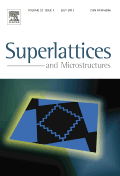
SUPERLATTICES AND MICROSTRUCTURES
Unveiling the potential of microstructured materials.SUPERLATTICES AND MICROSTRUCTURES is a premier journal dedicated to the exploration and dissemination of cutting-edge research in the fields of Condensed Matter Physics, Electrical and Electronic Engineering, and Materials Science. Published by Academic Press Ltd - Elsevier Science Ltd, this journal has established itself as an important platform for scholars and industry professionals to share their findings related to the design, fabrication, and application of superlattices and microstructured materials. With a commendable impact factor reflected in its rankings—positioned within the top quartile in Physics and Astronomy as well as Electrical and Electronic Engineering—it offers high visibility and influence in the academic community. The journal has covered significant contributions from 1985 to 2022, although access options have transitioned, making staying current essential for researchers and practitioners alike. This journal not only serves as a repository of knowledge but also fosters collaboration and innovation in materials science and related disciplines.
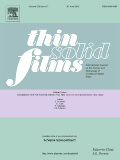
Thin Solid Films
Elevating Research in Electronic, Optical, and Magnetic MaterialsThin Solid Films, published by ELSEVIER SCIENCE SA, is a highly regarded journal in the fields of materials science and physics, specifically focused on the properties and applications of thin films. Established in 1967, this journal has been a leading platform for disseminating research on surfaces, coatings, and advanced materials. With its consistent publication through the notable HIndex of scholarly impact, this journal showcases a diverse range of studies ranging from electronic, optical, and magnetic materials to novel surface and interface engineering. In recent evaluations, Thin Solid Films has achieved significant rankings, including a Q2 position in Materials Chemistry and Metals and Alloys, reflecting its relevance and importance in ongoing scientific discourse. Although it does not offer open access, it provides a vital resource for researchers, professionals, and students seeking to advance their knowledge and expertise in thin film technology. The journal's commitment to quality and innovation makes it an essential publication for anyone engaged in the field.

APPLIED PHYSICS A-MATERIALS SCIENCE & PROCESSING
Exploring the Frontiers of Materials InnovationApplied Physics A: Materials Science & Processing, published by Springer Heidelberg, is an esteemed academic journal that has been at the forefront of innovative research since its establishment in 1995. With a strong focus on the intersection of physics, materials science, and engineering, this journal explores cutting-edge developments and applications that influence contemporary materials research. Categorized in the Q2 quartile across both Chemistry and Materials Science, it boasts respectable rankings in Scopus, affirming its influence and reach within the academic community. Although primarily a subscription-based journal, it is dedicated to disseminating high-quality research findings that advance our understanding in these fields. Researchers, professionals, and students alike can benefit from the journal's commitment to publishing comprehensive studies, methodological advancements, and insightful reviews that push the boundaries of knowledge in materials science.

Applied Surface Science Advances
Catalyzing Collaboration in Surface Science ResearchApplied Surface Science Advances, published by ELSEVIER, is a leading open-access journal since 2020, based in the Netherlands. With ISSN 2666-5239, this journal conducts pioneering research in the rapidly developing domains of Surfaces and Interfaces and Surfaces, Coatings, and Films. Holding a prestigious Q1 category ranking in both fields for 2023, it underscores its significance, ranking #12 out of 57 in Surfaces and Interfaces and #28 out of 132 in Materials Science according to Scopus metrics, placing it in the 79th percentile. This journal's accessible format ensures that groundbreaking studies and innovations are available to a broad audience, fostering collaboration and advancement within the scientific community. Committed to excellence, Applied Surface Science Advances not only encourages the dissemination of high-quality research but also aims to be a key resource for researchers, professionals, and students interested in the latest developments and applications in surface science.

SURFACE AND INTERFACE ANALYSIS
Unveiling the Secrets of Material InterfacesSURFACE AND INTERFACE ANALYSIS, published by WILEY in the United Kingdom, is a renowned journal specializing in the examination of nanoscale phenomena and the properties of surfaces and interfaces across various materials. With a focus on advancing the fields of Chemistry, Condensed Matter Physics, and Materials Science, this journal has established itself as a critical resource since its inception in 1979, bridging over four decades of scientific discourse. Notably, it holds a commendable position in the Scopus rankings, emerging in the 2023 Q3 quartile across multiple categories, including Chemistry (miscellaneous) and Surfaces, Coatings, and Films. Although it does not currently offer Open Access, SURFACE AND INTERFACE ANALYSIS remains pivotal in disseminating high-quality research, providing an essential platform for academic scholars, industry professionals, and students aiming to deepen their understanding of surface phenomena and material characteristics. Its comprehensive coverage of innovative methodologies, experimental results, and theoretical insights reaffirm its significance in the scientific community.
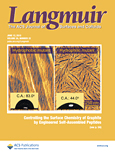
LANGMUIR
Connecting Scholars through Rigorous Scientific InquiryLANGMUIR is a prominent peer-reviewed journal published by the American Chemical Society, serving as a vital platform for research in various fields, including condensed matter physics, materials science, electrochemistry, and spectroscopy. With an ISSN of 0743-7463 and an E-ISSN of 1520-5827, this journal has established itself as a reputable source of cutting-edge scientific findings since its inception in 1985. Recognized for its rigorous academic standards, LANGMUIR holds significant ranking positions, including Q1 in condensed matter physics and spectroscopy, and Q2 categories in electrochemistry and materials science, reflecting its impactful contributions to these disciplines. Although the journal does not currently offer open access, it continues to foster collaboration and discussion among researchers by publishing high-quality articles that explore the frontiers of chemistry and physics. By engaging with LANGMUIR, readers can stay informed about the latest advances in surface and interface science, making it an essential resource for professionals, researchers, and students dedicated to these fields.
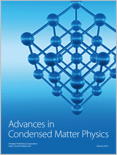
Advances in Condensed Matter Physics
Accelerating Insights in Nanotechnology and MoreAdvances in Condensed Matter Physics is a distinguished journal published by HINDAWI LTD, dedicated to the rapid dissemination of high-quality research in the field of condensed matter physics. Since its inception in 2008, this Open Access journal has facilitated wide accessibility to cutting-edge findings and theoretical advancements, with aims to foster collaboration and innovation within the scientific community. With an ISSN of 1687-8108 and an E-ISSN of 1687-8124, the journal covers an extensive range of topics, from quantum materials to nanotechnology, ensuring relevance and engagement across various sub-disciplines. As a testament to its impact in the field, it is ranked in the Q3 category for 2023 within Scopus and holds a position in the 34th percentile for physics and astronomy. The journal's continuous commitment to publishing significant exploratory research until 2024 makes it a pivotal resource for researchers, professionals, and students eager to stay on the leading edge of condensed matter physics advancements.

SURFACE ENGINEERING AND APPLIED ELECTROCHEMISTRY
Catalyzing Progress in Materials Science and EngineeringSURFACE ENGINEERING AND APPLIED ELECTROCHEMISTRY, published by PLEIADES PUBLISHING INC, stands as a pivotal resource in the realms of engineering and materials science. With an ISSN of 1068-3755 and an E-ISSN of 1934-8002, this journal encompasses an extensive scope that includes industrial applications, and innovative surface treatments, fostering advancements in the fields of Industrial and Manufacturing Engineering, Surfaces, Coatings and Films, and Surfaces and Interfaces. Recognized for its contributions, it currently holds a Q3 classification in both Industrial and Manufacturing Engineering and Surfaces, Coatings and Films, alongside a Q4 ranking in Surfaces and Interfaces for the year 2023. Despite its competitive standings, the journal encourages inclusive dialogue and dissemination of research from a global community—making it an essential platform for researchers and professionals dedicated to surface technologies and applied electrochemistry. Potential contributors and readers can expect a comprehensive exploration of techniques and innovations, reinforcing the journal's commitment to bridging theory and practical application in these dynamic fields.